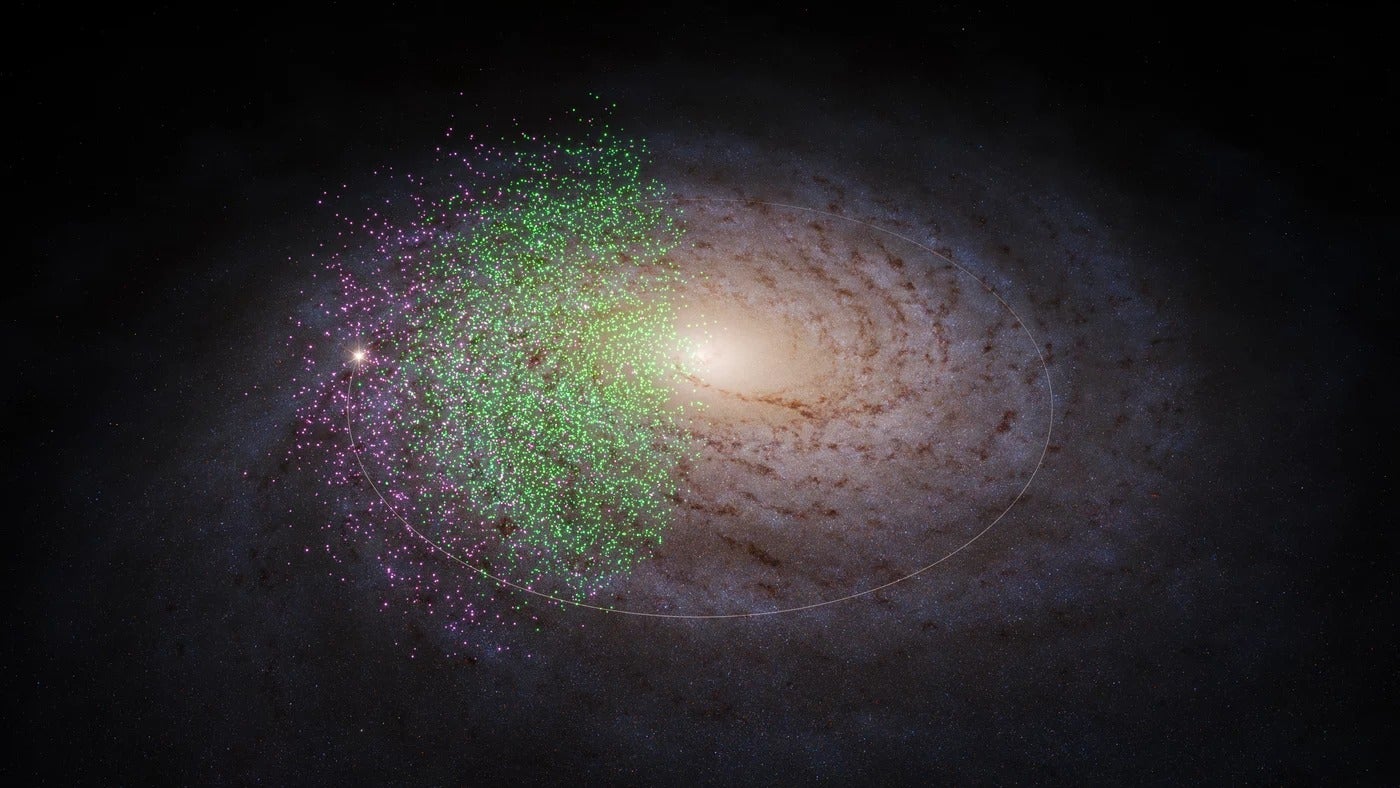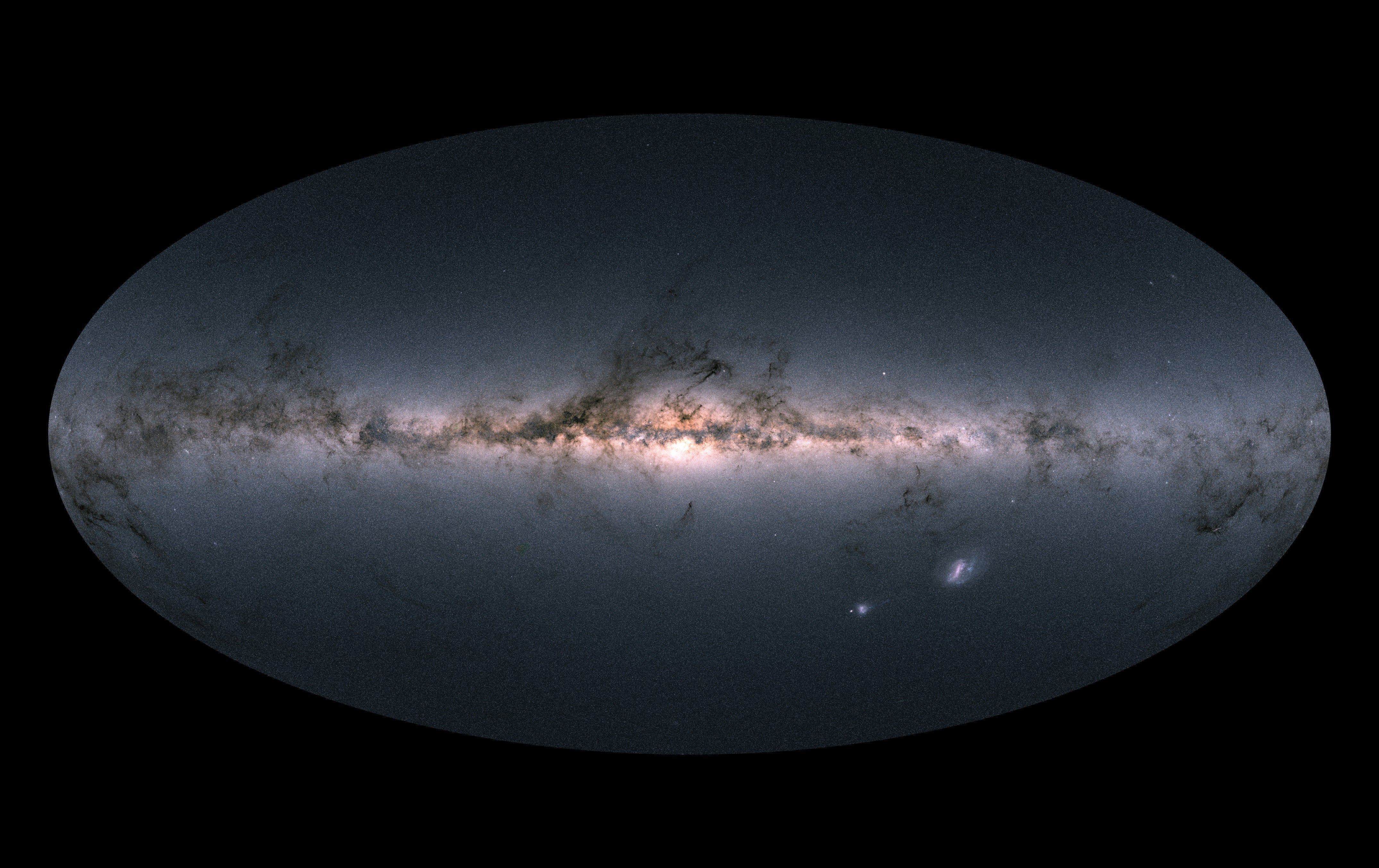
Galactic archaeologists who decode our galaxy’s complex family tree have discovered two more branches: primordial streams of thousands of stars near the heart of the Milky Way that may be two of its very first pieces from at least 12 billion years ago. The ancient clusters likely formed even before the Milky Way’s disk and spiral arms began taking shape, offering fresh insights into how our 13.6-billion-year-old galaxy formed during infancy and assembled itself towards the orderly spiral we know today.
The stars in both streams are between 12 billion and 13 billion years old — so ancient that its discoverers are amazed they could detect them at all, let alone in such clearly distinguishable groups. The astronomers suspect these starry threads, each as massive as 10 million suns, were left behind when their respective massive galaxies merged with an infant Milky Way about 12 billion years ago. If this hypothesis is confirmed with future observations, astronomers would have discovered the Milky Way’s very genesis, a representative of a time when a nascent Milky Way was throwing itself together through multiple mergers with smaller, ill-fated galaxies.
The new threads of stars have been named Shiva and Shakti, after the divine Hindu couple whose union is said to have created the universe. Shiva appears to host roughly 5,600 stars and Shakti some 1,700, with many more probably yet to be discovered.
Shiva and Shakti are “two marvelous additions to the family of mysteries that we’re accumulating on the Milky Way’s assembly,” says Bob Benjamin, an astronomer at the University of Wisconsin–Whitewater, who wasn’t involved with the discovery but whose research focuses on the structure of the Milky Way. “There is huge excitement about this idea that we can now see lots and lots of pieces of the galaxy with their own individual histories that have come together to make the galaxy we know and love.”
Mixed messages
Stars in both Shiva and Shakti are in “very unique orbits” around the Milky Way that are different from remnant stars from other galaxy mergers, says Khyati Malhan of the Max Planck Institute for Astronomy (MPIA) in Germany, who led the discovery. Despite being leftovers of two separate galaxies, the chemical make-up of both stellar groups is quite similar — a tell-tale sign that their respective progenitor galaxies were equally dense, says Malhan.
Malhan and his colleague, Hans-Walter Rix of MPIA, discovered the stars while analyzing data sent home by the European Gaia observatory, which maps the motions and spectra of millions of stars in our galaxy. The duo describes Shiva and the slightly farther-out Shakti in a paper published in March in the Astrophysical Journal.
To piece together the history of our galaxy, astronomers usually classify stars into two groups — those birthed within our galaxy and outsiders that were sucked in by our galaxy’s immense tidal forces. The two populations normally have distinguishable chemical compositions. In-situ stars like those populating our galaxy’s disk are rich in elements heavier than hydrogen and helium, including iron. These elements forge as a result of the stars being “nicely pressure cooked” in our galaxy’s dense environment, says Malhan. In contrast, ex-situ stars such as those sprinkled in the relatively sparse halo don’t have large heavy-metal reservoirs.
Puzzlingly, Gaia data shows Shiva and Shakti lack iron — hinting they were birthed outside our galaxy and later merged — but are rich in other heavy elements normally attributed to local stars. “This is where Shiva and Shakti are sending us mixed signals,” says Malhan. The cosmic subtlety has muddled the true origin of these stars, which holds sway in fine-tuning our understanding of the Milky Way’s early history.
“They provide an interesting puzzle,” says Benjamin. “As a scientist, I love that part because it means we have debates.”
It is possible that the newfound stars were born in-situ and merely swept from deep within our galaxy to their discovery location about 26,000 light-years from the center. This would be thanks to the Milky Way’s central bar, the dense structure spanning thousands of light years that links the galaxy’s spiral arms. Just as a rotating fan pushes air molecules into dense pockets, our galaxy’s swirling bar “shepherds” stars and piles them up in crowded groups. The “bar trapping,” which locks stars into orbits resonant with the bar’s, explains the observed chemistry of the new stars “quite simply and easily,” says astronomer Vasily Belokurov of the University of Cambridge, who studies galaxy formation (though he wasn’t involved with the new study). “The bar helps — it drags these stars out, kind of presenting them to us.”
If the stars were just an artifact of the bar’s rotation, Malhan and Rix argue the chemistry of the new stars should be similar to debris of another galaxy merger named the Gaia-Sausage-Enceladus from 10 billion years ago, whose remnants are a group of blue stars in our galaxy’s halo. “So far, that does not seem to be the case,” says Malhan.
“Time will tell,” says Benjamin. “For the reasons they state, I think they have the right interpretation.”
Not everyone is convinced, however, that the GSE debris is an accurate comparison to the new stars. Belokurov notes leftover stars from the GSE merger don’t spend time near the center of the Milky Way where they can interact with its bar, so they “cannot really get trapped,” he says. “Once you realize that, it basically just tips the balance the other way.”
Although Belokurov commends the team’s transparency for pointing out alternatives to the main interpretation, there is “confusion on their part as to what the chemistry of these substructures should look like if it’s part of the halo trapped and spun up by the bar,” he says.
Upcoming data from the Gaia spacecraft, scheduled for release early 2026, would include fainter stars and provide more details on the origin of Shiva and Shakti. Even if the new stars end up not representing how the Milky Way first formed, they could still reveal intriguing clues about how it evolved over eons, Benjamin says. “To me, that’s just as exciting.”
Galactic archaeology through the eyes of Gaia

During interviews, Benjamin, Malhan, and other astronomers repeatedly applaud the Gaia spacecraft for its revolutionary heft in decoding our galaxy’s history. Just a decade ago, Malhan notes, the earliest known merger with our Milky Way was 6 billion years ago, when the Sagittarius dwarf galaxy fell into our galaxy. With precise star-mapping by Gaia of increasingly fainter stars, however, astronomers in 2019 found debris of the GSE merger from 10 billion years ago. The presumed infusion of Shiva and Shakti from 12 billion years ago revealed by Gaia takes astronomers even further back in time.
“It’s like if someone were to say, ‘We’re gonna give you a new set of glasses every year that makes your vision better every year,’” says Benjamin. “Just think how excited you would be.”
“All the tools and the knowledge we’re applying right now existed even 10 years ago, to some extent,” adds Malhan. Data from Gaia, however, is providing the clearest-yet views of our galaxy tracing back to its infancy, he says. “It’s all thanks to Gaia.”
Of course, our Milky Way is not the only galaxy with a history of cannibalizing smaller members of its ilk. Astronomers know from cosmological simulations that every galaxy evolves — and at times shreds to pieces — by mergers that occur over billions of years. Just how speedily a galaxy grows or dies, however, depends heavily on factors exclusive to its location in our universe, such as how littered its home is with other galaxies.
“Every galaxy has its own unique story,” says Benjamin. “But what’s special about our galaxy is we can put its story together.”









